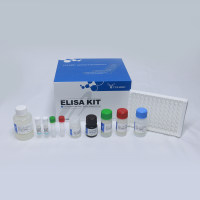In Vivo siRNA Delivery to the Mouse Hypothalamus Shows a Role of the Co-Chaperone XAP2 in Regulating TRH Transcription
互联网
674
RNA interference mediated by small interfering RNAs (siRNAs) is a powerful tool for evaluating gene function in vivo. In particular it should be able to provide tissue-specific and developmental stage-specific knockdown of target genes in physiological contexts. However, there are few demonstrations of its use on neuronal specific genes in vivo . We recently developed a cationic lipid-based approach to study gene function in a neuronal context. In particular, we applied it to study how the novel partner for TR  1, hepatitis virus B X-associated protein 2 (XAP2), a protein first identified as a co-chaperone protein, affects T3-transcriptional repression of the hypothalamic gene, TRH . The cationic lipid-based technique used, JetSI/DOPE, was previously shown to efficiently knockdown reporter gene mRNA in vivo . Using JetSI/DOPE to vectorize siRNA against XAP2 mRNA, we show that XAP2 is needed specifically for TR
1, hepatitis virus B X-associated protein 2 (XAP2), a protein first identified as a co-chaperone protein, affects T3-transcriptional repression of the hypothalamic gene, TRH . The cationic lipid-based technique used, JetSI/DOPE, was previously shown to efficiently knockdown reporter gene mRNA in vivo . Using JetSI/DOPE to vectorize siRNA against XAP2 mRNA, we show that XAP2 is needed specifically for TR  1-mediated (but not TR
1-mediated (but not TR  2) activation of hypothalamic TRH transcription. Thus, this cationic lipid-based siRNA strategy can effectively be used to reveal fine, tissue-specific and isoform-specific effects on neuronal gene transcription in vivo.
2) activation of hypothalamic TRH transcription. Thus, this cationic lipid-based siRNA strategy can effectively be used to reveal fine, tissue-specific and isoform-specific effects on neuronal gene transcription in vivo.
 1, hepatitis virus B X-associated protein 2 (XAP2), a protein first identified as a co-chaperone protein, affects T3-transcriptional repression of the hypothalamic gene, TRH . The cationic lipid-based technique used, JetSI/DOPE, was previously shown to efficiently knockdown reporter gene mRNA in vivo . Using JetSI/DOPE to vectorize siRNA against XAP2 mRNA, we show that XAP2 is needed specifically for TR
1, hepatitis virus B X-associated protein 2 (XAP2), a protein first identified as a co-chaperone protein, affects T3-transcriptional repression of the hypothalamic gene, TRH . The cationic lipid-based technique used, JetSI/DOPE, was previously shown to efficiently knockdown reporter gene mRNA in vivo . Using JetSI/DOPE to vectorize siRNA against XAP2 mRNA, we show that XAP2 is needed specifically for TR  1-mediated (but not TR
1-mediated (but not TR  2) activation of hypothalamic TRH transcription. Thus, this cationic lipid-based siRNA strategy can effectively be used to reveal fine, tissue-specific and isoform-specific effects on neuronal gene transcription in vivo.
2) activation of hypothalamic TRH transcription. Thus, this cationic lipid-based siRNA strategy can effectively be used to reveal fine, tissue-specific and isoform-specific effects on neuronal gene transcription in vivo.








